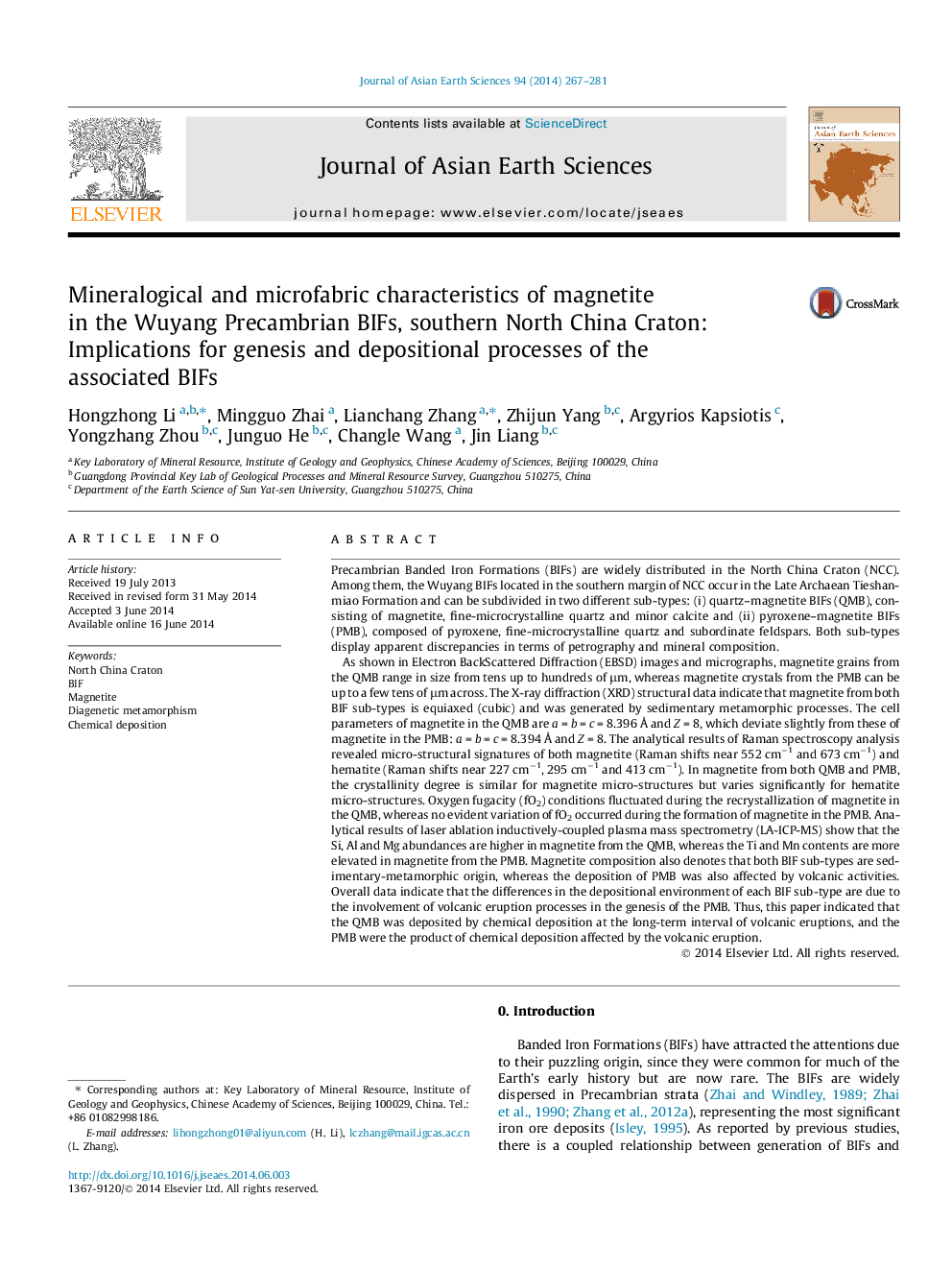| کد مقاله | کد نشریه | سال انتشار | مقاله انگلیسی | نسخه تمام متن |
|---|---|---|---|---|
| 4730595 | 1640374 | 2014 | 15 صفحه PDF | دانلود رایگان |

• Two type BIFs are identified in continuous sedimentary sequence with alternative existence.
• The Wuyang BIFs have magnetites with diverse sedimentary environments.
• The pyroxene–magnetite BIF is reported in Wuyang BIF with magmatic contribution.
Precambrian Banded Iron Formations (BIFs) are widely distributed in the North China Craton (NCC). Among them, the Wuyang BIFs located in the southern margin of NCC occur in the Late Archaean Tieshanmiao Formation and can be subdivided in two different sub-types: (i) quartz–magnetite BIFs (QMB), consisting of magnetite, fine-microcrystalline quartz and minor calcite and (ii) pyroxene–magnetite BIFs (PMB), composed of pyroxene, fine-microcrystalline quartz and subordinate feldspars. Both sub-types display apparent discrepancies in terms of petrography and mineral composition.As shown in Electron BackScattered Diffraction (EBSD) images and micrographs, magnetite grains from the QMB range in size from tens up to hundreds of μm, whereas magnetite crystals from the PMB can be up to a few tens of μm across. The X-ray diffraction (XRD) structural data indicate that magnetite from both BIF sub-types is equiaxed (cubic) and was generated by sedimentary metamorphic processes. The cell parameters of magnetite in the QMB are a = b = c = 8.396 Å and Z = 8, which deviate slightly from these of magnetite in the PMB: a = b = c = 8.394 Å and Z = 8. The analytical results of Raman spectroscopy analysis revealed micro-structural signatures of both magnetite (Raman shifts near 552 cm−1 and 673 cm−1) and hematite (Raman shifts near 227 cm−1, 295 cm−1 and 413 cm−1). In magnetite from both QMB and PMB, the crystallinity degree is similar for magnetite micro-structures but varies significantly for hematite micro-structures. Oxygen fugacity (fO2) conditions fluctuated during the recrystallization of magnetite in the QMB, whereas no evident variation of fO2 occurred during the formation of magnetite in the PMB. Analytical results of laser ablation inductively-coupled plasma mass spectrometry (LA-ICP-MS) show that the Si, Al and Mg abundances are higher in magnetite from the QMB, whereas the Ti and Mn contents are more elevated in magnetite from the PMB. Magnetite composition also denotes that both BIF sub-types are sedimentary-metamorphic origin, whereas the deposition of PMB was also affected by volcanic activities. Overall data indicate that the differences in the depositional environment of each BIF sub-type are due to the involvement of volcanic eruption processes in the genesis of the PMB. Thus, this paper indicated that the QMB was deposited by chemical deposition at the long-term interval of volcanic eruptions, and the PMB were the product of chemical deposition affected by the volcanic eruption.
Figure optionsDownload as PowerPoint slide
Journal: Journal of Asian Earth Sciences - Volume 94, November 2014, Pages 267–281